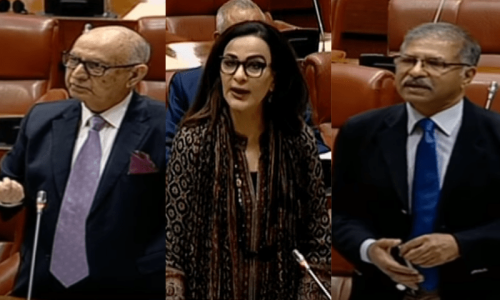There is a beautifully illustrated map of the world drawn by a Moroccan cartographer from the 12th century. It resembles a loosely drawn abstract painting with irregular spaces that represent land floating in white while negative spaces are filled in with a brilliant ultramarine blue that represents water. To balance the composition, mountain ranges are lovingly drawn as trails of tiny, irregular, triangular patterns in Indian yellow that snake their way across the expanse of white. The same motif neatly encircles the entire composition, as if it has been enclosed in an embroidery hoop and stitched together as a network of patterns.
Yet this manuscript with its jewel-like colours, hand-drawn and painted by Muhammad Al-Idrisi is more than just a pretty painting. Each land mass has been painstakingly labeled and identified, with one exception in the composition: Mecca is positioned in the centre of the world map while Europe is placed in the south. Al-Idrisi lived during the peak of the rise of Muslim civilisation, when development in science and the arts was at its zenith.
To a Muslim, the importance and sacredness of Mecca is immense. Perhaps it made sense for Al-Idrisi to envision his world in this way, where the most important city for him in terms of religion (Mecca) was at the centre and regions of the world that were not powerful, both politically or militarily, such as Europe were placed much lower down in the world map.
Ideally, maps must provide a definitive and accurate view of the world. But hand-drawn, illustrated maps in history — though beautiful to look at — also contain clues. Al-Idrisi’s map tells us a little about the world in which it was made and a little about the maker too. Thus, maps are a link between our past and present, and contemporary artists are now using them to highlight issues such as identity and belonging. Can one reflect about one’s place in the world by looking at maps as a tapestry of human existence?

In a series of world maps made over a period of 20 years during the 1990s, Italian artist Aligheiro Boetti set out to do just that. He lived and worked with artisans in Afghanistan and Peshawar who embroidered flags of the world as entire illustrated tapestries of world maps. For their richness of colour and craftsmanship, these are recognised as works of art. Boetti even acknowledged the artisans’ collaborative effort in the texts written in Italian and Farsi (Persian) that border each map. Today, when we look at these maps, they reveal certain preferences and ironies, much like Al-Idrisi’s map did; for instance, Israel does not exist on these maps, because Afghanistan does not recognise it as a nation. The yellow sickle and red expanse of the Union of Soviet Socialist Republics (USSR), as embroidered on the tapestry, is the evidence that there was a country called the USSR once.
Some contemporary artists use maps to highlight issues of identity and belonging
Indian-born American artist Zarina Hashmi takes on weightier themes of loss and inflects them with personal experience when using maps as motifs in her work. From 1958 onwards, Hashmi travelled all over the world with her husband, who was a diplomat at the time. Her frequent travelling, coupled with the trauma of Partition, compelled her to question how one should deal with loss, and what it means to belong somewhere when one does not feel at home anywhere. In, ‘These Cities Blotted Into Wilderness’ (2003), Hashmi laments the tragedy of Partition. Her nine monochrome woodcuts are maps of cities that have been marked by violence. These include Sarajevo, Beirut, Baghdad and Kabul. Beirut has been depicted perhaps in the wake of the civil war that ravaged the nation for over a decade: it appears to be in two tones, with violent strokes and gouging of lines from the woodcut. The divisive impact of the war has left no traces of neighbourhoods or ordered grids in Beirut.
Not all artists are this sombre or serious. British artist Grayson Perry uses humour and imaginary maps of walled cities to comment on the complexity of his own identity, mapping his own mind. Although he replicates the text and look of 16th-century maps of European cities, the text is not the same. In ‘Map Of An English Gentleman’, we see roads, landmarks, water features and buildings with names and labels such as ‘Schizophrenia’, ‘Don’t Know’, ‘Don’t Care’, ‘Living In The Moment’, ‘Creative Side’ and ‘Alpha Masculinity’. Such art overturns the idea that maps are permanent or impartial. Instead, Perry lays bare our vulnerabilities, hopes and fears.
We can access maps on a daily basis now with our phones. They are certain, impersonal and help us navigate. Or so we think. As we brave this pandemic, the world has become a very uncertain and fearful place. Perhaps that is what Grayson Perry’s maps are urging us to do — allay our fears and lighten our anxieties, but never stop questioning our place in the world.
Published in Dawn, EOS, May 17th, 2020
















































Dear visitor, the comments section is undergoing an overhaul and will return soon.